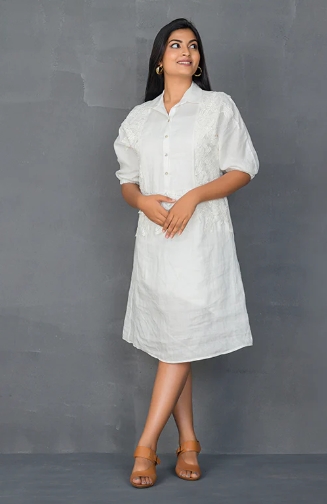When it comes to shopping for clothes, women often find themselves paying less than men for similar items. This raises the question: why are women's clothes cheaper than men's? There are several factors that contribute to this phenomenon.
Firstly, the fashion industry is largely driven by demand. Women tend to buy more clothes than men, which means that there is a higher demand for women's clothing. As a result, manufacturers are able to produce larger quantities of women's clothing at a lower cost per unit, which translates into lower prices for consumers.
Secondly, the materials used to make women's clothing are often less expensive than those used for men's clothing. For example, women's t-shirts are typically made from thinner, lighter-weight fabrics than men's t-shirts. This not only makes them less expensive to produce, but also makes them more comfortable to wear in warmer weather.
Another factor that contributes to the lower cost of women's clothing is the design. Women's clothing tends to be more simple and streamlined than men's clothing, which means that there are fewer details and embellishments to add to the cost. Additionally, women's clothing is often designed to be more versatile, which means that it can be worn in a variety of settings and paired with different accessories.
Finally, there is the issue of marketing. Women's clothing is often marketed as disposable or trendy, which means that consumers are more likely to buy new items each season. Men's clothing, on the other hand, is often marketed as classic or timeless, which means that consumers are more likely to invest in higher-quality pieces that will last for several years.
In conclusion, there are several reasons why women's clothes are cheaper than men's. These include the higher demand for women's clothing, the use of less expensive materials, the simpler design, and the marketing strategies employed by the fashion industry. While this may seem unfair to some, it is simply a reflection of the market forces at work in the fashion industry.


